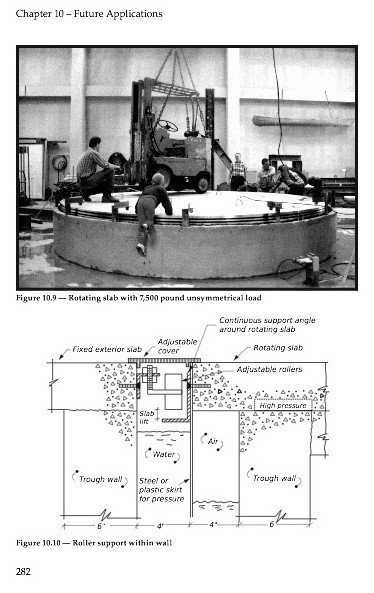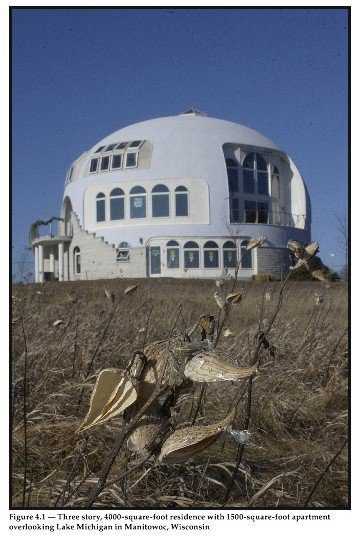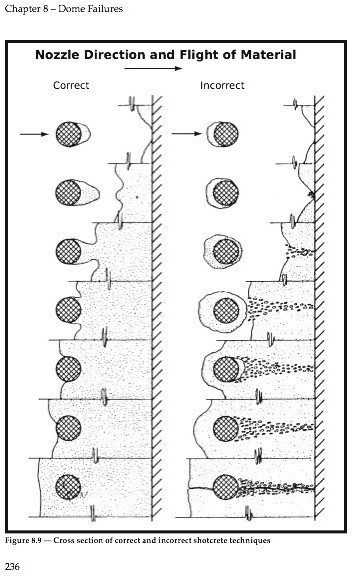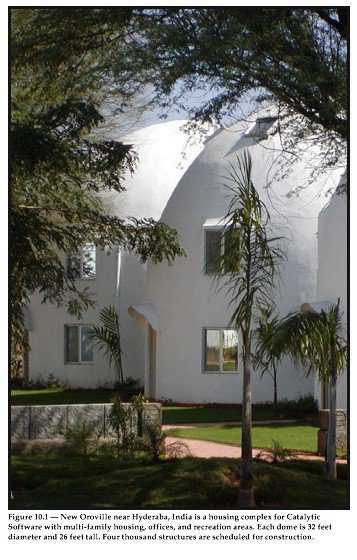
Dr. Wilson’s book is a reference text on the construction of concrete thin shell structures, specifically written for engineers, architects, builders and students of those disciplines. On the cover is the fabulous Dome of a Home located in Pensacola, Florida and operated as a luxurious vacation resort. This dome is a prime example of a thin shell concrete dome that is not only beautiful but has the proven ability to withstand hurricanes.
Practical Design of Concrete Shells: An Invaluable Reference Text
Meet the Author: Dr. Arnold Wilson
After Dr. Wilson completed a 40-year teaching career and earned the title of Professor Emeritus of Civil Engineering at Brigham Young University (BYU) and after he completed more than 30 years as Monolithic’s Senior Consulting Engineer, he wrote a book.
And not just any book. Dr. Wilson’s book is a reference text on the construction of concrete thin shell structures, specifically written for engineers, architects, builders and students of those disciplines.
In the book’s Foreword, David South, President of Monolithic, said, “I believe he (Dr. Wilson) has engineered more thin shells than any other person, living or dead.” Those projects include more than 1500 thin shells located throughout the United States and in 40 other countries.
In 2007 when Dr. Wilson announced his retirement, David South described him as a “Pioneer member of a train of super engineers — professionals, over the ages, primarily responsible for the development of thin shell concrete domes. When you talk about that train, you have to include Arnold. When it comes to the engineering of domes built using Airforms, Arnold is a pioneer. I would put him directly after David Billington” (Professor of Civil and Environmental Engineering, Princeton University, NJ).
Dr. Wilson’s interest in and fascination with concrete thin shells began in the late 1950s, while an engineering student at BYU. In 1961, he assisted his professor with the engineering of a giant thin shell that Provo, Utah residents eventually dubbed “Ream’s Turtle.” Originally designed as an ice skating rink, over the years this structure’s purpose changed, put it remained useful until it was razed in 2006.
By 1965, Dr. Wilson was teaching a graduate course in the design of concrete thin shells, using Thin Shell Concrete Structures by David P. Billington, McGraw-Hill, 1965 and 1982 as the text. He continued teaching that course until his retirement from BYU in 1997.
Meet the Book: Practical Design of Concrete Shells
Its 398 pages contain a generous amount of diagrams, photographs and formulas. The artwork in this article is but a small example of those in the text.
Each of the book’s ten chapters ends with detailed References, and it includes an Index and computer programs, both in print and on a CD, used for calculating the stresses in a thin shell.
In addition to the technical information, the book talks about the decline of thin shells in the 1970s and their resurrection, once construction processes using inflatable forms were invented.
It discusses the benefits of thin shells, such as cost-effective construction and maintenance, near-absolute protection from natural and some manmade disasters, structural strength and durability, extremely low energy use, interior and exterior design flexibility and eye appeal.
It includes domes constructed as homes and as commercial and public facilities, huge domes with diameters of up to 1000 feet, unusual applications such as airplane hangars and water tanks.
Finally, the book looks at the future potential of thin shell concrete domes.
But besides all the good stuff, Practical Design of Concrete Shells also cites dome failures and the reasons for those failures. In David South’s opinion, that kind of thoroughness makes this book an invaluable text.

Dr. Arnold Wilson — He completed a 40-year career at Brigham Young University teaching Civil Engineering, earned the title of Professor Emeritus, became Monolithic’s Senior Consulting Engineer and wrote the much-needed reference text: Practical Design of Concrete Shells.

Research for rotating floors — Research involving the rotating floor has been completed that demonstrates a feasible and economical solution. In Dr. Wilson’s book, you can read his research of rotating floors pertaining to aircraft hangers.

Unique design examples — Dr. Wilson devotes an entire chapter in his book about design examples. This thin shell concrete home overlooking Lake Michigan in Manitowoc, Wisconsin, has three stories and 4000 square feet of living space in the main residence and 1500 square feet in the adjoining apartment.

Shotcrete Techniques — This book illustrates the proper shotcrete techniques to minimize shadowing behind the rebar so that leakage is controlled and corrosion prevented in a water tank.

Tall buildings — In this book you can see how several large silos have been built to create a hotel or apartment complex or condo housing units such as the one located near Hyderaba, India. Catalytic Software is a housing complex that includes multifamily housing, offices and recreation areas. Each dome is 32′ × 26′.